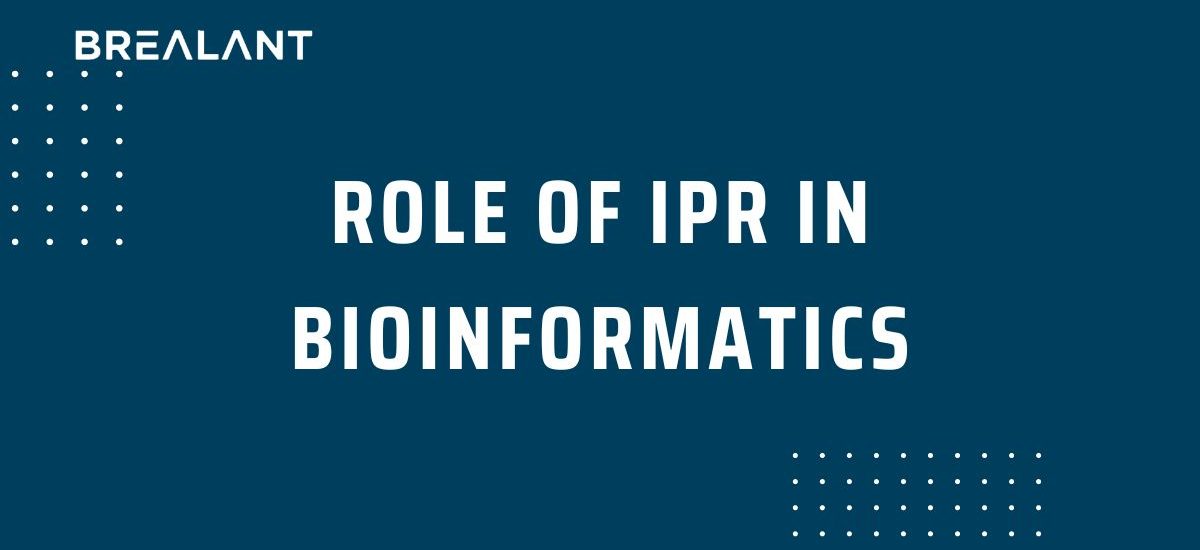IPR plays an important role in the biomedical sciences field by protecting scientists’ intellectual property. It helps ensure that the scientific discoveries made by scientists are not taken advantage of by others. IPR also helps to ensure that new drugs and treatments are developed based on published research. Intellectual property rights are important to protect what scientists have discovered during their work.
In bioinformatics, the intellectual property (IP) may be the DNA sequence, protein structure, mRNA transcript, or cell culture. IPR helps to ensure that the scientific discoveries made by scientists are not taken advantage of by others. IPR also helps to ensure that new drugs and treatments are developed based on published research.
Intellectual Property Rights (IPRs) play a significant role in bioinformatics. IPRs help ensure that valuable discoveries are not taken advantage of by others. The main purpose of IPRs is to encourage and protect scientific research and development activities from being monopolized or misused by competitors.
Why is IPR important for biotechnological inventions?
Intellectual property rights in biotechnology are the subject of some debate. Those who support them contend that they give developers a crucial incentive to create because they can profit from successful ideas thanks to these protections. Those who oppose tight enforcement of these safeguards contend that increased information sharing will lower costs and improve access to care, particularly in poor nations. Thanks to biotechnology intellectual property rights, healthcare organizations can now assert their ownership of these assets and defend their right to do so under common law, state law, or federal law.
Intellectual property rights grant owners the right to utilize drugs, brand names, and other things in the healthcare industry. Intellectual property rights are frequently the main source of value for these businesses, particularly in the biotech industry. IPR helps the scientific community ensure that scientists and inventors get due credit for their work. IPR protects their work from being used by others without compensation. It will not be wrong to say that IPR is one of the major reasons science and biomedical research are progressing by leaps and bounds.
How does biotechnology IPR work in the healthcare industry?
This is paramount to firms in the current business environment, where branding, marketing, and image are crucial elements of operational business strategy. However, trademarks are used for more than just medicine names; they are also utilized for hospital names, doctor practice names, and other institutions with distinctive branding.
IPR is vital for the field of bioinformatics because it helps to protect the intellectual property of scientists. IPR also ensures that new drugs and treatments are developed based on published research. Bioinformatics is an increasingly important area, so scientists must maintain their IPR rights.
Patents are used by biotechnology businesses to safeguard their intellectual property rights in medication delivery systems. Here are a few examples of biotechnology IPRs used by famous drug companies:
- The intellectual property rights to the Symbicort Turbuhaler, a dry powder inhaler containing the medication budesonide/formoterol for the maintenance treatment of asthma and COPD, are owned by AstraZeneca.
- Although several businesses sell the antidepressant fluoxetine hydrochloride, only Eli Lilly has the right to brand it Prozac.
- Hoffmann-La Roche is authorized to market the anti-influenza medication Oseltamivir under the trademarked name Tamiflu.
Several healthcare organizations employ patents to safeguard their intellectual property rights in products, including prosthetic limbs, splints, eye diagnostic equipment, and computer systems for managing patient care.
As mentioned earlier, IPR is a set of laws that protects rights related to intellectual property. It ensures that scientists can use the research they have carried out without getting ripped off by others and prevents others from taking advantage of the research conducted by someone else. This ensures that others do not misuse scientific discoveries.
Conclusion
In recent years, IPR has come to play a larger role in bioinformatics. This stems from the increasingly collaborative nature of biomedical research and the increasing need for data sharing and reuse. IPR plays a major role in the biomedical sciences; thus, scientists must update their knowledge and skills on IPR. It is also important for researchers to be proactive when filing for patents and writing articles to ensure that they can protect their IP.
Does the complexity of aspects of intellectual property rights bother you? Are you worried about the infringement of your unique invention? Stop searching, as the best professional help is just one click away. Brealant is a renowned IP service provider firm with years of expertise in the various domains of IPR, such as trademark and patent applications. With a decade-long legacy of providing quality services to millions of companies, Brealant strives to perform better by solving every client query. Visit the website to learn more.




